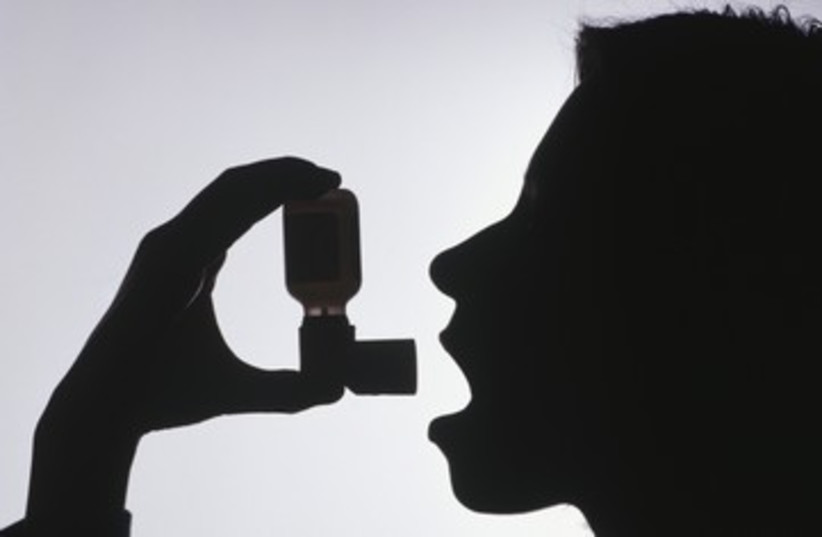The percentage of people with asthma is higher in cities with significantly higher levels of air pollution, according to the Maccabi KSM Research and Innovation Center. Maccabi is Israel’s second-largest health fund, serving 2.7 million people, about 25% of the population.
The World Health Organization classifies asthma as a non-communicable disease that affects children and adults. It is the most common chronic disease among children.
Asthma rates by Israeli city
The data, released Wednesday, a day after World Asthma Day, indicate the percentage of Maccabi patients suffering from asthma in various cities, then compared those numbers to the level of air pollution in these locations. The researchers found that communities east of Haifa have the highest number of asthma patients, including Nazareth, where 15% of Maccabi members were diagnosed with asthma, and Kiryat Tivon, where 12% of patients have the disease.
These areas also have high pollution levels, with an average of PM2.5 of 18.8. PM2.5 is an air pollution index that measures the number of fine particles in the air that are less than 2.5 micrometers in diameter. These particles can be anything from metals, chemicals, ammonia, sulfates, nitrates, etc. Because they are so small, they can penetrate deep into the respiratory tract.

The air pollution levels in the various cities were based on Environmental Protection Ministry data from the last six months. Exceptionally high levels of air pollution were also found in Or Yehuda, Tel Mond, Shoham and Yahud, all cities where 10% to 11% of patients had asthma. Similarly, in Tel Aviv, which was also in the top 20 most-polluted cities, 10% of patients were diagnosed with the disease.
Industrial Haifa is not on the list, because winds divert its polluted air to the east, impacting neighboring cities. Nonetheless, data released by the Health Ministry in 2018 showed that hospitalization of children due to asthma complications was more than two times higher in Haifa than the national average.
In Jerusalem and the Golan Heights, there were lower rates of asthma patients and correspondingly low levels of air pollution.
Pollution is not the sole cause of asthma, Dr. Tal Patalon, head of Maccabi KSM, explained. Instead, multiple interacting factors mediate asthma, including genetics, lifestyle and environmental exposures.
“Air quality and climate change affect us all. Therefore, they must be an integral part of strategies for promoting health in Israel and around the world,” Patalon said.
She added that “during an asthma attack, narrowing of the airway occurs, along with increased secretion of mucus. This process is worsened by air pollution.” According to the World Health Organization, asthma affected an estimated 262 million people in 2019 and caused 455,000 deaths.
